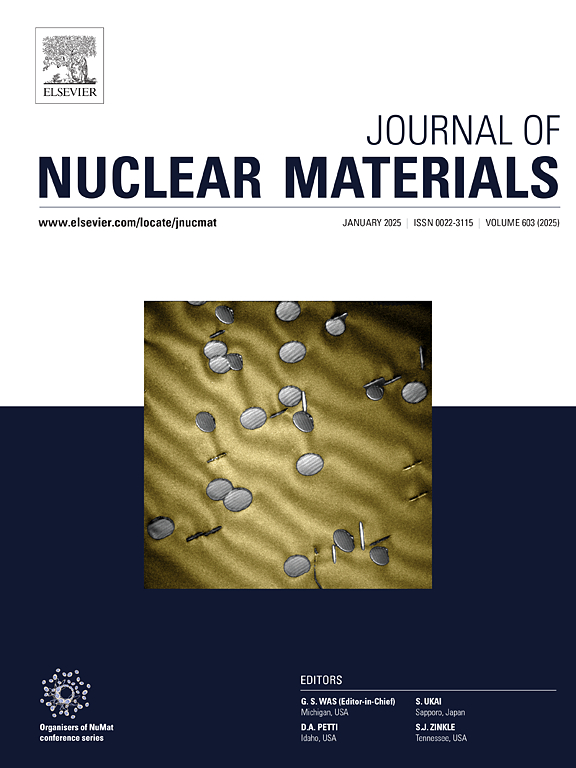Impact of dopants and leachants on modern UO2-based fuels alteration under final storage conditions: Single and joint effects
IF 2.8
2区 工程技术
Q3 MATERIALS SCIENCE, MULTIDISCIPLINARY
引用次数: 0
Abstract
Doped-UO2 fuels such as Cr- or Cr/Al-UO2 (accident-tolerant fuels (ATF) or modern nuclear fuels) and Gd–UO2 fuel (being Gd a burnable neutron absorber now in use in LWR fuels) need to be deeply studied not only relating to its advantages under normal and accident conditions in operation, but also its behavior under different repository conditions. After the geologic repository post-closure, once the spent nuclear fuel come into contact with groundwater after container failure, the release of some radionuclides will rely on the UO2 matrix dissolution processes. The corrosion/dissolution behavior of doped UO2 fuels, including ATF, in a deep geological repository is barely comprehended. The join influence of dopants and groundwater composition needs further enhance knowledge and understanding by filling gaps in the empirical databases. This study examines the impact of Cr, Cr/Al and Gd dopants on the corrosion of UO2 fuel pellets in groundwater, based on the known benefits of adding certain soluble metal oxides to UO2, depending on the nature of the doping element. Systematic dissolution experiments were conducted with Cr-, Cr/Al-, and Gd-doped UO2 pellets in three aqueous media with varying pH and HCO3− concentrations. Groundwaters used with increasing the complexity of the system (i.e. contain many ionic species) were 20 mM NaClO4 (pH 7.2), 19:1 mM NaHCO3:NaCl (pH 8.9), and synthetic young cement water with Calcium (pH 13.5). The experiments revealed that the leachant attributes, particularly the combined effects of pH, redox conditions, and HCO3−, had a more significant impact on uranium concentration and dissolution rates than the dopants themselves. No secondary uranium phases were observed on the surfaces of any post-leached samples. These findings contribute to the understanding of the combined effects of doping and aqueous composition on the dissolution behavior of modern nuclear fuels under long-term conditions anticipated in a deep geological repository.
求助全文
约1分钟内获得全文
求助全文
来源期刊

Journal of Nuclear Materials
工程技术-材料科学:综合
CiteScore
5.70
自引率
25.80%
发文量
601
审稿时长
63 days
期刊介绍:
The Journal of Nuclear Materials publishes high quality papers in materials research for nuclear applications, primarily fission reactors, fusion reactors, and similar environments including radiation areas of charged particle accelerators. Both original research and critical review papers covering experimental, theoretical, and computational aspects of either fundamental or applied nature are welcome.
The breadth of the field is such that a wide range of processes and properties in the field of materials science and engineering is of interest to the readership, spanning atom-scale processes, microstructures, thermodynamics, mechanical properties, physical properties, and corrosion, for example.
Topics covered by JNM
Fission reactor materials, including fuels, cladding, core structures, pressure vessels, coolant interactions with materials, moderator and control components, fission product behavior.
Materials aspects of the entire fuel cycle.
Materials aspects of the actinides and their compounds.
Performance of nuclear waste materials; materials aspects of the immobilization of wastes.
Fusion reactor materials, including first walls, blankets, insulators and magnets.
Neutron and charged particle radiation effects in materials, including defects, transmutations, microstructures, phase changes and macroscopic properties.
Interaction of plasmas, ion beams, electron beams and electromagnetic radiation with materials relevant to nuclear systems.
 求助内容:
求助内容: 应助结果提醒方式:
应助结果提醒方式:


